Looking for some advice on planning an RV road trip? You've come to the right place! Planning road trips is one of my favorite things to do, and doing it in an RV is not much different than doing it in a car. Since I live and travel in an RV with my family of 5, I can give you some guidelines for planning an epic RV road trip.
This article is designed to get you from the initial stages of planning your road trip itinerary to the last-minute RV preparations before you leave. The guidelines and tips offered in this article follow this outline (arranged in this order in the body of the post):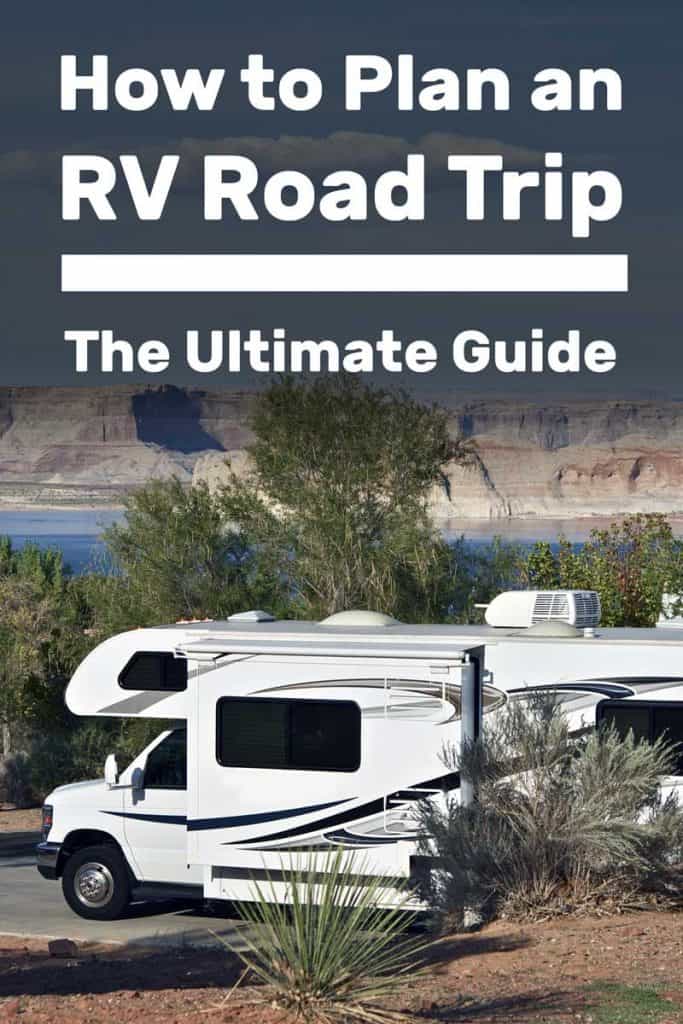
- Decide on the length of trip and general destination
- Figure out transportation
- Prioritize which specific attractions to see
- Calculate driving distances
- Schedule one night or multiple night stops
- Choose an anchor point for camping
- Research all camping options
- Make reservations, if needed
- Gather the essential RV gear
- Prepare your RV to go
Before we go further, I want to emphasize that there is no one right way to plan a road trip. So many factors are involved in any road trip, but the mindset and attitude of the travelers are most important.
Some people enjoy planning and find comfort in knowing details are in place, while others may feel stifled and want the freedom to change plans at any moment.
We hope that these guidelines will help you think about your upcoming RV travel and make decisions about the kind of road trip you want to have. Feel free to adjust these guidelines as best fits you and your traveling style.
1. Where will you go and for how long?
This factor is probably one of the most important ones to know right off the bat. The distance you can cover any number of places you can visit will be quite different if you have a long weekend versus if you have two weeks to travel. You can have an enjoyable RV trip in just a few days, as long as you are realistic about the distance that you're trying to cover.
Choosing your trip destination
Are you interested in California beaches or the deserts of the Southwest? Is hiking in the Pacific Northwest something you dream of? Or do you prefer historical sites on the East Coast? No matter which region you choose, there will be plenty of sights to see on your RV trip.
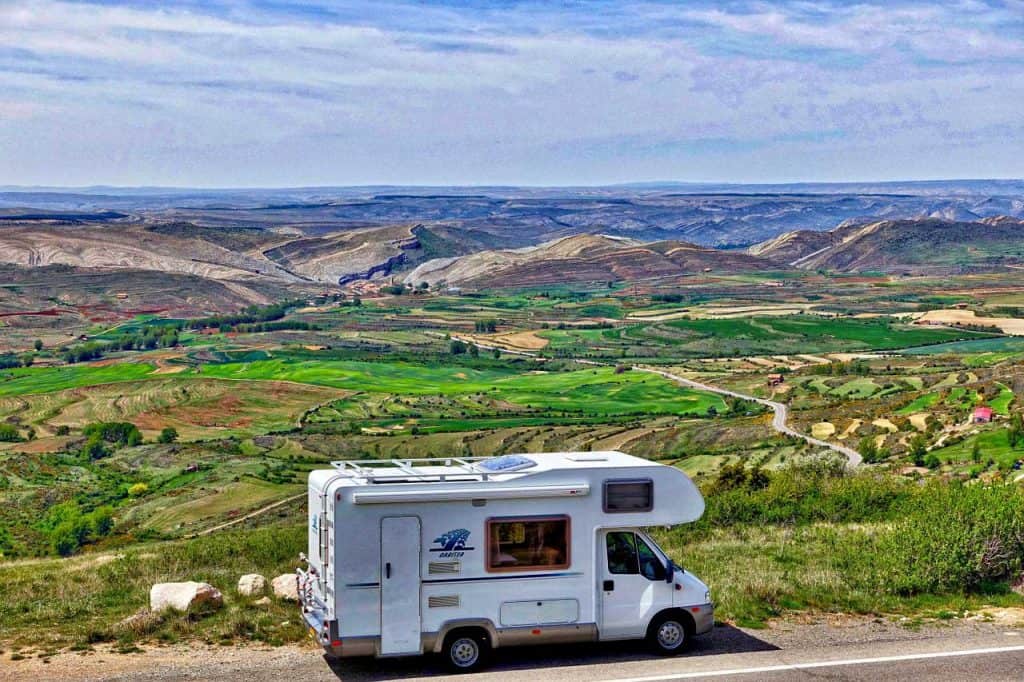
Single or multiple destination trip?
This question is most likely going to be determined by the amount of time you have. Shorter road trips will have one main destination where you'll park your RV. From that single location, you can take day trips in your tow car to explore the general area.
With a longer time frame, you can plan to visit multiple destinations on your road trip. That means you'll be moving your RV from one place to another and staying at multiple campsites.
Define the region
Usually, a road trip will focus on a certain geographical region. One particular state, a coastline, a national park, a lake, or a recreation area. RVing is not usually the best way to explore major metropolitan areas, but you can camp just outside of the city and do a day trip to explore city attractions.
Decide the distance or area that you think you can cover in an RV for your road trip. Some areas lend themselves to RV travel more than others. Generally speaking, less populated areas and areas close to major interstates and highways are preferable for RV travel.
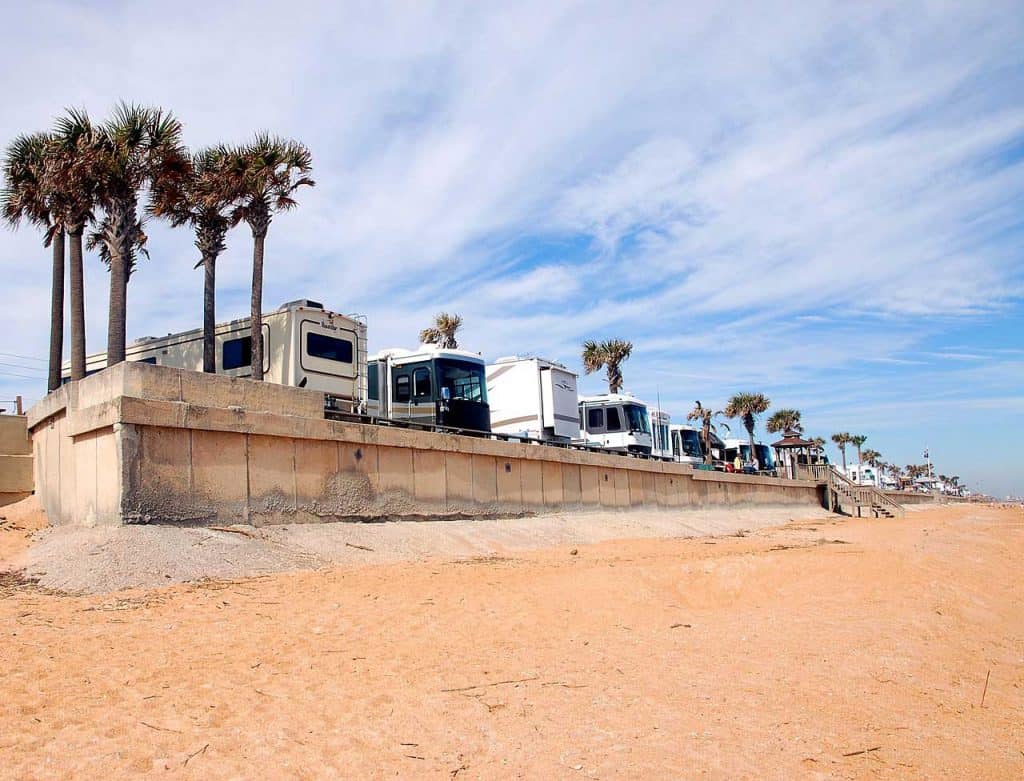
Weather considerations
You want to plan ahead so that the weather at your destination won't be a hindering factor to your RV travel. Do your research ahead of time on weather patterns. Plan to travel when the road conditions will be at their best.
Avoid snow, ice, and high winds
You will especially want to avoid driving an RV if high winds are expected. At high winds, RVs are less stable and not recommended to be on the road. In general, driving your RV in windy conditions is going to slow you down, cut down on your gas efficiency, and cause a lot more stress to the driver and to your rig.
RVs are not storm-safe buildings
The thing to remember is that it is not safe to stay inside an RV during a tornado, hurricane, or another high wind storm. Even with careful planning, however, an unexpected storm can arise. Be sure you know where the nearest storm-rated building is, and plan to go there if needed.
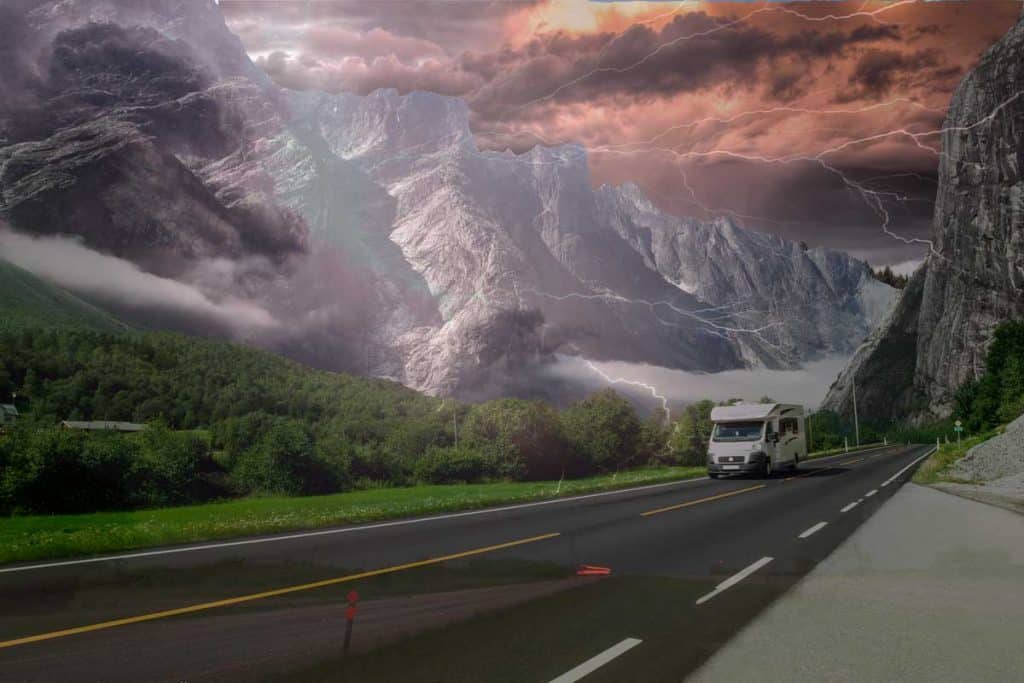
Read more:
What Happens If An RV Gets Struck By Lightning?
What Should You Do With An RV During A Hurricane?
2. Figure out transportation
Once you've got your time frame and destination picked out, how will you get there?
Driving from home
If you happen to own an RV, this is an easy decision to make. You'll be able to plan all of your traveling originating at your home. This can be a great thing, but what if your destination is very far from your home? Will you have enough time to drive your RV from your home and back, as well as have some time to enjoy the destination itself?
Rent an RV closer to your destination
If you want to explore an area that's far away from home, consider an alternate form of transportation to get you to your destination first.
For example, let's say your home is in Texas, and you want to RV camp through the Pacific Northwest. It might make sense for you to fly into Portland or Seattle, and rent an RV there to drive out to your desired destination. You can maximize your time by flying to get to the region you want to visit, but still have the road trip experience!
Never rented an RV before? Check out this post -
Renting An RV – The Complete Guide For Beginners
3. Prioritize specific sights you want to see
With all the information we have at our fingertips today, you will quickly find many things to see and do in almost any area you travel to. There is never enough time to see and do everything, so you need a system to prioritize your must-see destinations and the optional ones.
In our family, we have 5 people, so we try to arrive at some kind of consensus on the sights we visit. Often that means compromise. I have to remind myself that it's okay if we don't see everything. Trying to cram everything in can often make people stressed out, which is the opposite of how you want to feel on a vacation!
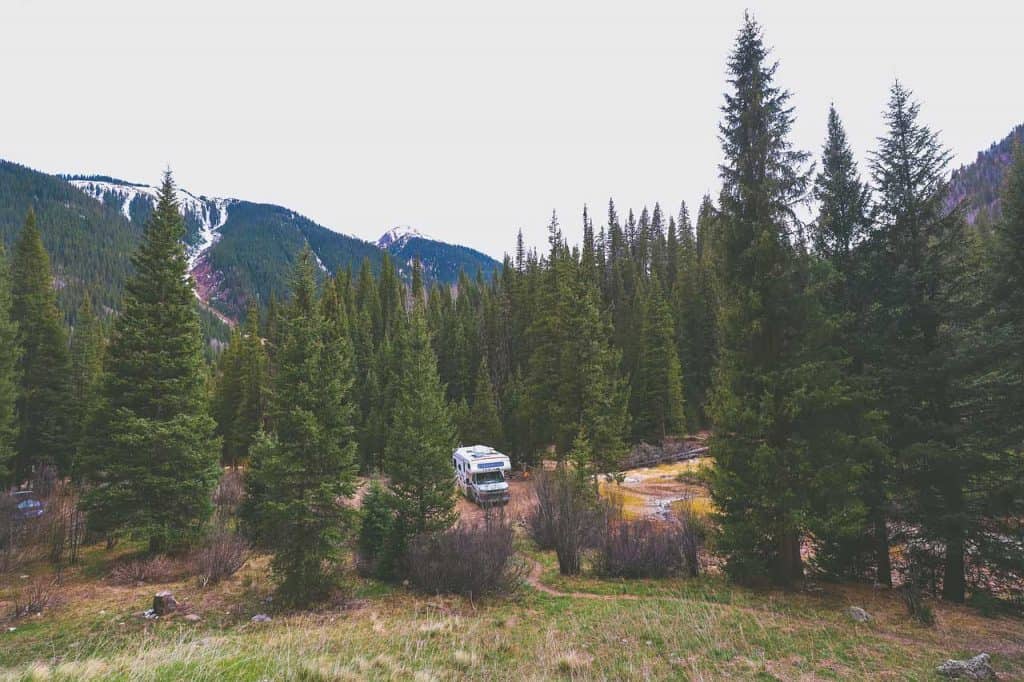
Map out your must-see sights
Once you've decided on the sights you'd most like to see on your road trip, map them out. This can also help you prioritize your stops. Google Maps is really a fantastic tool that can quickly help you see how far apart your destinations really are from each other.
Some people use a spreadsheet or other note-taking system to record distances between stops. This is a great way to stay organized and have important information easy to access when making reservations, figuring out gas expenses, etc.
4. Calculate driving time between sights
As we all know, the miles between any two locations is very different than the driving time! Especially when traversing windy mountain roads or through busy cities with traffic. Smaller highways are often slower than major interstates. Look at the roads you plan to use and take all these factors into consideration when calculating driving time.
Driving time estimates
If you are pulling your RV, it is going to take you longer than your GPS app is telling you. We suggest adding at least 20% of the driving time (suggested by your navigation app) to get a better estimate of your total driving time.
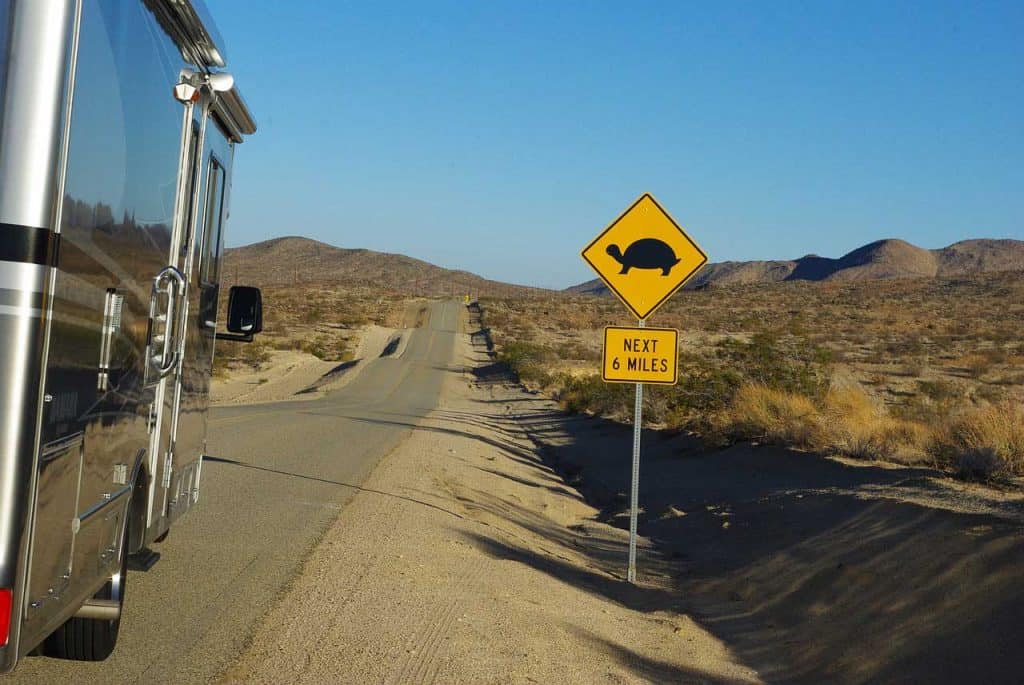
How many hours a day will you drive?
This one comes down to personal preference. Are you someone who likes to "push through" and get in an 8-10 hour driving day, just to get to your destination? Or, do you prefer to do 3-4 hours a day, enjoying different destinations as you go? Depending on the needs of your passengers, you may require more frequent stops.
In any case, you are the only one who knows how many hours you can comfortably cover in a day. Use that information to help you make decisions about your road trip.
Our family can drive for a couple of days that are longer (6-8 hours) and then we need to stop for at least a few days and recharge. Now we try to plan our stops to accommodate our travel pace. With experience, you will learn what works best for you as well.
5. Schedule one night or multiple night stops
Depending on how long you choose to drive each day, you may need different lengths of stays on your trip. If you're planning to drive multiple days to get to your destination, you need quick, overnight stops. These overnight stays do not need to be in scenic or special places, they are just to sleep and recharge for another day of driving.
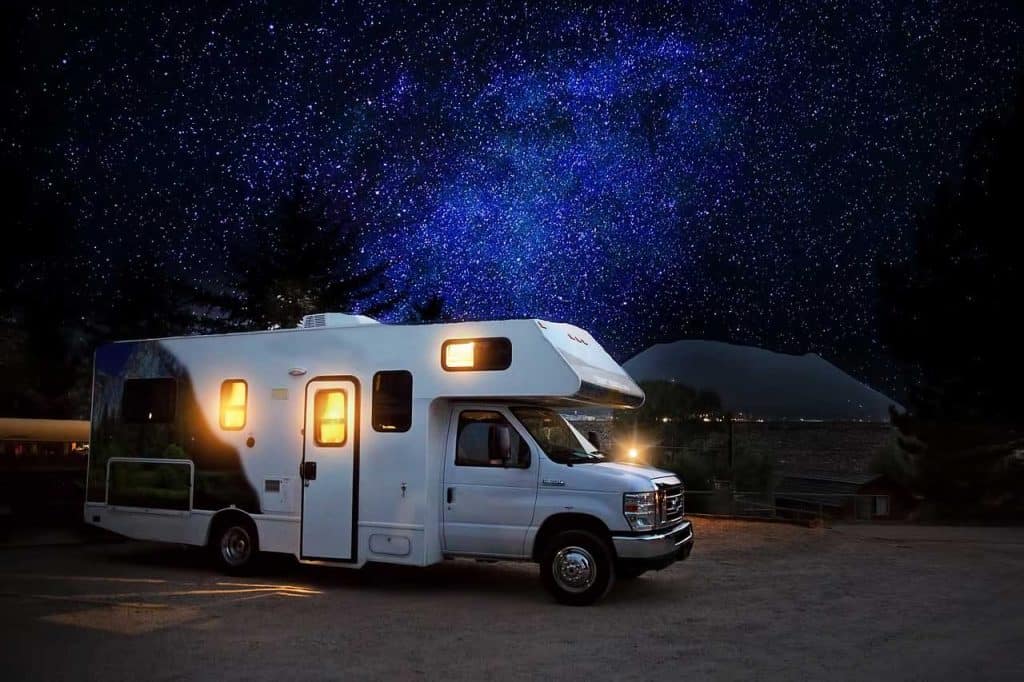
However, if your destination is within a day's driving distance from your starting point, you can plan a multiple night stay to relax and enjoy the attractions there.
6. Choose an anchor point for camping
If your must-see destinations have more miles between them than you want to drive in a day, choose an anchor point for camping. An anchor point is a central location which is the most equidistant from all of the sights.
Our family has found that on longer, multi-destination trips, camping at an anchor point between our must-see attractions is the best strategy. By parking our RV at a central location, we make that our home base for multiple nights. Then, we use our tow vehicle to explore our must-see destinations as day trips. With this strategy, we avoid having to move our RV multiple times on a trip.
Below we'll give you some options for where you can have a quick, overnight stay as well as where you can camp for multiple nights in a row.
7. Research all camping options
Unlike driving in a car and finding a hotel for the night, RV camping requires more forethought. You can't just park an RV wherever you want. Most public or commercial lands have rules about RV parking. Below are some places that do allow RV parking and will be safe choices for you on your road trip.
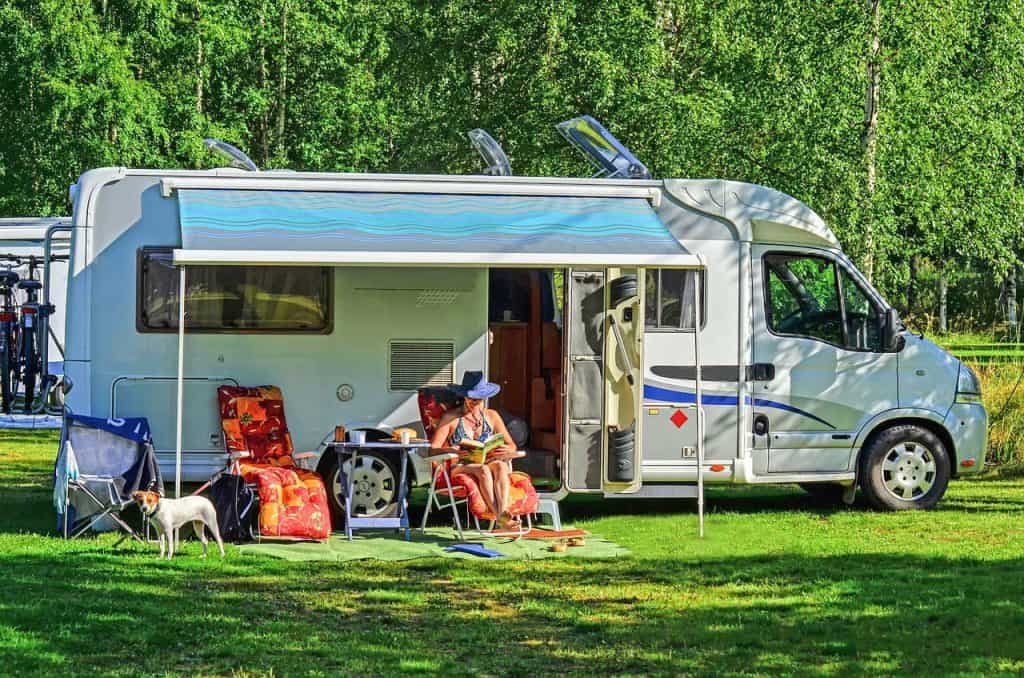
Public Campsites
By public campsites, I'm referring to any campgrounds that are operated by the federal, state or county governments. They include:
- National, State or County Parks
- US Army Corps of Engineers Project Areas
- National or State forests and Bureau of Land Management Sites.
Advantages
Our family enjoys camping at these campgrounds for a few reasons. First, they are less expensive than privately-owned campgrounds in any area. Also, they tend to have more space between their sites and give you more room to spread out. Lastly, they tend to be located in places that are scenic and help you feel like you are really camping.
Disadvantages
One downside of these types of public campgrounds is that they don't usually offer many amenities. Some have full hookups for RVs, but many do not. Again, you need to know your own personal camping style to decide if public campgrounds will the best accommodations for your RV road trip.
Another disadvantage to public campsites is that they can be difficult to reserve. Many are first-come, first-served. The ones that can be reserved online often fill up as soon as their booking window opens.
Locating public campsites
Most public campsites can be found on recreation.gov. State and county parks often have their own websites where they manage reservations and updated information on for campgrounds in their area. Check with the specific state or county to find these. ReserveAmerica is another popular website that some states use to manage their campground reservations.
Private RV Camping
Most areas with major tourist attractions will also have private RV parks located nearby. These are located on privately owned land, where the owners have designated spaces for RVers to park overnight.
Advantages
In contrast to the public campgrounds, private RV parks usually have more amenities to offer. Most offer hookups, from partial to full hookups, to RVers. It is common to have modern bathhouses with showers and laundry facilities for their guests to use. Some nicer RV parks have a pool/hot tub, mini-golf course and a recreation center with games and activities.
It is usually a little easier to reserve a spot at private campgrounds. In popular places, you'll still need to plan ahead. In less frequented areas or during off-season time, you may be able to find a spot with just a day's notice.
Disadvantages
Privately owned campgrounds cost more than their public neighbors. In some ways, you get what you pay for, and many people feel like all of the amenities and full-hookups are worth it.
Another drawback to many private RV parks is that their campsites are located close together. There is less room to call "your own" around your RV. We've even stayed in places where there was not enough room to even put our awning out. Sometimes an RV park feels like little more than an oversized parking lot of RVs. Not all RV parks are like this but do your research ahead of time if possible.
Locating private RV parks
Ideally, you can find private RV parks through a website online. Most private RV parks maintain an online presence these days, but that isn't always the case.
Once you’ve narrowed down your anchor point and area where you'd like to camp, we recommend using websites like campgroundreviews.com or campendium.com to locate private RV parks in the area.
These websites include links to many RV campgrounds, both public and private in the area. The reviews listed here can also give you valuable information about campgrounds.
Campground memberships and discount programs
There are privately owned campgrounds that you can purchase a membership for. If you think you’ll be RVing several times in a year, it may be worthwhile to invest in this type of membership. It can save you a lot of money. Especially if the locations of their campgrounds match where you want to travel.
Many campgrounds offer a discount to people who have a Good Sam's membership. Passport America is another popular campground discount program. Always ask if a campground offers AAA or military discounts.
Some private campground chains, such as KOA, offer their own membership which gives discounts whenever you stay at their properties. Thousand Trails and Encore properties sell a membership which allows you to stay at any of their campgrounds nationwide. Each membership has its own rules and reservation system, so contact them directly to learn more.
Boondocking/dry camping
For most of us, boondocking (also considered dry camping, with no hookups) is an option for quick, one-night stays. For my family, overnighting in a Walmart or Cracker Barrel parking lot is what boondocking looks like. Some states do allow overnight parking at their designated Rest Areas.
Some RVs are fully equipped with a generator or solar panels, etc. which makes boondocking an option for multiple nights in a row. If you are set up that way, you can score campsites in amazing locations for free, or close to free.
Bureau of Land Management (BLM) offers many campsites for boondocking in popular areas. You just need to make sure you pack out everything you pack in, and leave no trace.
Boondocking memberships
Just like with memberships for private campgrounds, if you think you may RV camp several times in a year, getting a boondocking membership is worth looking into. The upfront cost is minimal, and you increase your options of places to camp.
Harvest Hosts is an organization that helps connect RV campers to businesses like farms, wineries, golf courses or other businesses that have parking space for RVs during the night when their businesses are closed. These are usually just overnight stays, and it is courteous to patronize the business if you are able.
Boondockers Welcome is another membership program where you can find individuals who have land and allow RVers to boondock on their property. Often, the landowners have RV experience themselves, and this can be a fun connection for both parties to make.
If you are interested in boondocking but not sure how to supply electricity to your RV without hookups, read this article.
Evaluate and decide on your campground/s
Once you've explored all of your camping options and calculated their distance from your anchor point and sights you want to see, you can make a decision. Obviously, your budget will also be a factor.
Sometimes paying a little more for a campground that's further away, is worth it for the comforts you'll gain. If your budget is tighter, you may not mind driving a little further to save some money. With RV camping, it can be hard to make those decisions, but once you do, you'll have an important part of your road trip taken care of.
8. Making reservations
You may wonder if it's necessary to make reservations when you RV camp. It's a good question, and the only answer I can give you is, it depends. It depends on the location, the time of year you're camping, and what kind of traveling style you prefer.
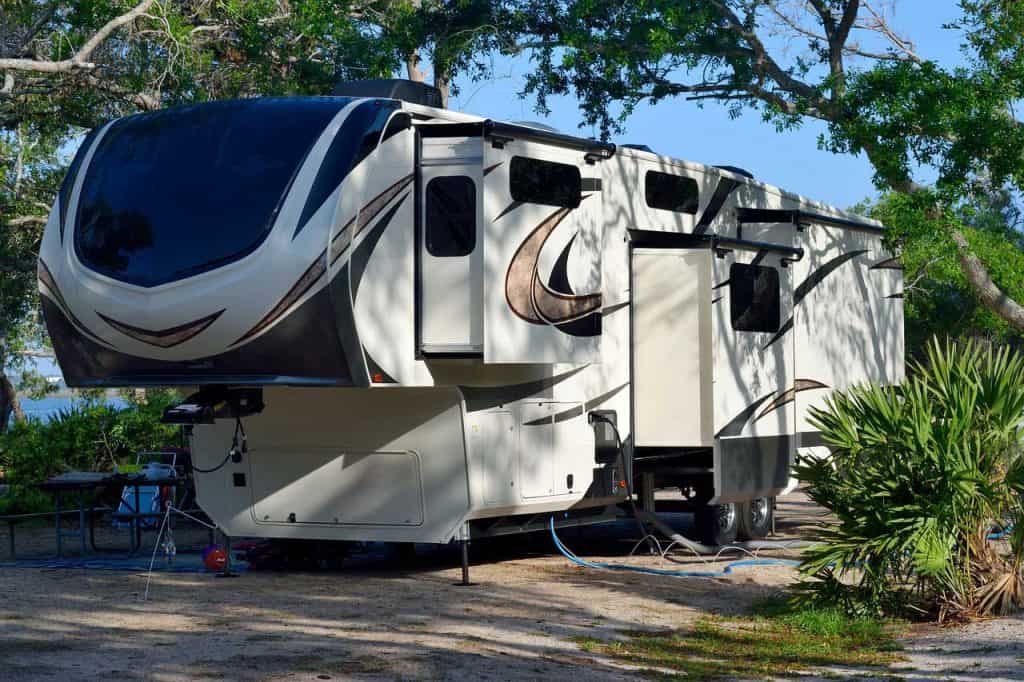
Advantages of reserving
Reserving a campsite ahead of time gives you the peace of mind that you will definitely have a place to park your rig during your trip. It gives your trip structure and helps you organize your time. Knowing your specific campground will help you plan your other stops, and even decide whether you need to do grocery shopping ahead of time or not.
With many more people RV camping than ever before, campgrounds are busier than in previous years. Especially in peak season, popular destinations will be booked up. We recommend making reservations during these times.
Disadvantages of reserving ahead of time
Not everyone enjoys having all the details planned out for their road trips. Travelers who have more flexibility in their schedule may stop and explore more frequently. If you enjoy less structure and more room for spontaneous stops, you might not want all your reservations made ahead of time.
If you feel like making reservations ahead of time will put pressure on you to arrive somewhere by a certain time, don't worry. There are plenty of public campgrounds that operate on a first-come, first served basis. You can call private RV parks while en route and see what they have available. There are usually last-minute cancellations at popular places. If you have the ability to boondock, then you can always find somewhere to park for the night.
9. Essential RV road trip gear
Once the basic itinerary has been set for your trip, you can focus on gathering the supplies you need for your road trip. Besides packing clothes and food for your trip, you need to make sure you have all the RV gear ready too.
Utility accessories
Sewer hoses and supports
These are essential items to carry in your RV if you are planning to use the water or toilet in your RV while camping. The sewer hose carries away all the liquid inside your gray and black holding tanks. Here are some recommended brands.
Sewer hose supports are not mandatory, but they are very useful. These work to provide support to your sewer hose as opposed to it just laying on the ground. They also help adjust the angle of the sewer hose, making dumping your tanks is as pain-free as possible.
Read more: Best RV Sewage Hoses Reviewed
Potable water hose
This is not just a garden-variety hose. You need something that is food grade to transport drinking water into your RV. We recommend at least 35 feet of hose to make sure it is long enough to connect to the water spigot at your campsite. You never know where the spigot will be located!
Power cord and plug adapters
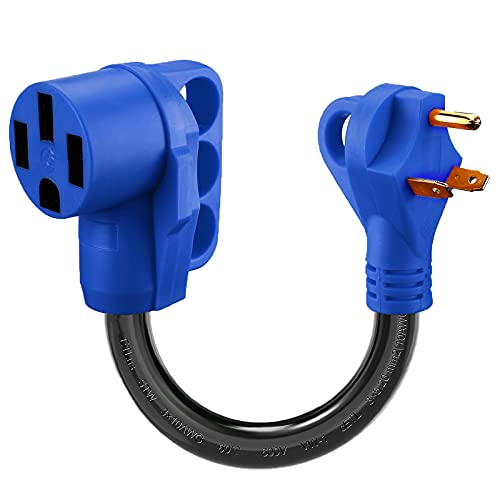 The RV should come with the 50 Amp electrical cord that you will use to connect your RV to power at your campsite. However, you may need to purchase a plug adapter, sometimes called dog bones (because of how they look).
The RV should come with the 50 Amp electrical cord that you will use to connect your RV to power at your campsite. However, you may need to purchase a plug adapter, sometimes called dog bones (because of how they look).
This is highly recommended in case you find yourself at a campsite that delivers 20 or 30 Amp power and you need to plug in. Note that this adapter will not increase the power coming into your RV, it will simply allow it to travel into your RV safely.
Leveling equipment
Leveling blocks & chocks

Leveling blocks help you balance your RV when you park it at your campsite. Unfortunately, most RV campsites are not already level. This requires some amount of work on our part to adjust our RV so that the floor of the RV will end up level.
It's really important to get your RV as level as possible. Not just for your comfort, but appliances and systems within the RV work better when your rig is balanced and level. Read more about how to use leveling blocks here.
Wheel chocks are simply wedges that fit underneath the tires of the RV after it's all level, to prevent the tires from doing any rolling forward (or backward).
Read more: How do RV leveling blocks work
Maintenance tools
Depending on what you have at home, (and your auto mechanic skills!) you may want to include more items. The list below is a suggested minimum of tools you may need on your RV road trip.
- Tire pressure gauge (read more about the best tire pressure monitoring for RV's)
- Hammer
- Pliers
- Wrench set
- Screwdriver set
- Wire cutters
- Utility knife
- Hydraulic bottle jack (for changing a tire)
- Duct tape & electrical tape
- Work gloves
- Latex gloves
Roadside emergency kit
In addition to carrying a roadside emergency kit with you on your road trip, consider enrolling in a roadside assistance program. Some auto insurance companies may include repairs to your RV, but always check with your policy to be sure.
Good Sam Club offers an emergency roadside assistance program that you can purchase for the period of time you'll be traveling. You can call them whenever you're stranded and they'll send someone out for free.
The following items should be collected and stored in an emergency kit, which you can easily access if needed.
- Emergency reflective triangles
- High-visibility cones
- Tow rope (6,500 lb capacity)
- Jumper cables
- Tire repair kit
- Flashlight & batteries
- Extra fuses
- Motor oil and coolant
- First aid kit
- Fire extinguisher (most RVs will have this pre-installed)
- Extra water
RV bathroom supplies
Without going into too many unpleasant details here, we need to talk about supplies for your RV toilet. RV toilets work by using a holding tank located underneath the bathroom to contain all the sewage materials. Eventually, you will dump this tank out, either at a dump station or at a campground where you have a built-in sewer connection.
To prevent odors and problems from your holding tank, make sure you bring these two important supplies.
Read more: How does the toilet work in an RV
RV-friendly toilet paper
Toilet paper designed specifically for RVs or boats will dissolve more quickly than regular TP. This is super important to reduce your chances of clogs in your system. When it's time to dump your tanks, everything will run smoothly out.
Read more: Why do you need special RV toilet paper
RV holding tank treatments
Sometimes these are called drop-ins, and they contain chemicals that are pre-calibrated to prevent odors coming from your holding tank. The most convenient ones come in the form of a liquid detergent pod, to drop into the toilet to deodorize the tank. Tank deodorizer can also come in liquid form in a bottle which you measure and pour in.
10. Prepare your RV to go
The following list is useful leading up to the last day before you make your trip.
Basic checklist
- Fill propane tanks
- Fill water tanks, if needed
- Check tire pressure
- Check fluids
- Balance weight when packing with supplies, food and clothing
- Prepare towing system if pulling a second vehicle
- Plug in the refrigerator the night before leaving (if possible)
- Secure all belongings inside the RV
- Download maps of the area you'll be driving through, in case of poor cell reception
- Fill tow vehicle with gas before hitching trailer or 5th wheel
That's it! Did we miss anything? We hope that after reading this guide, you feel fully prepared to plan your own RV road trip. And remember, if you're still not sure about it, check out our post titled "Should you go on an RV trip'" for a full list of the pros and cons.
Sometimes planning and anticipating is just as fun as the trip, so we hope this article helps you enjoy the process. Safe travels!
